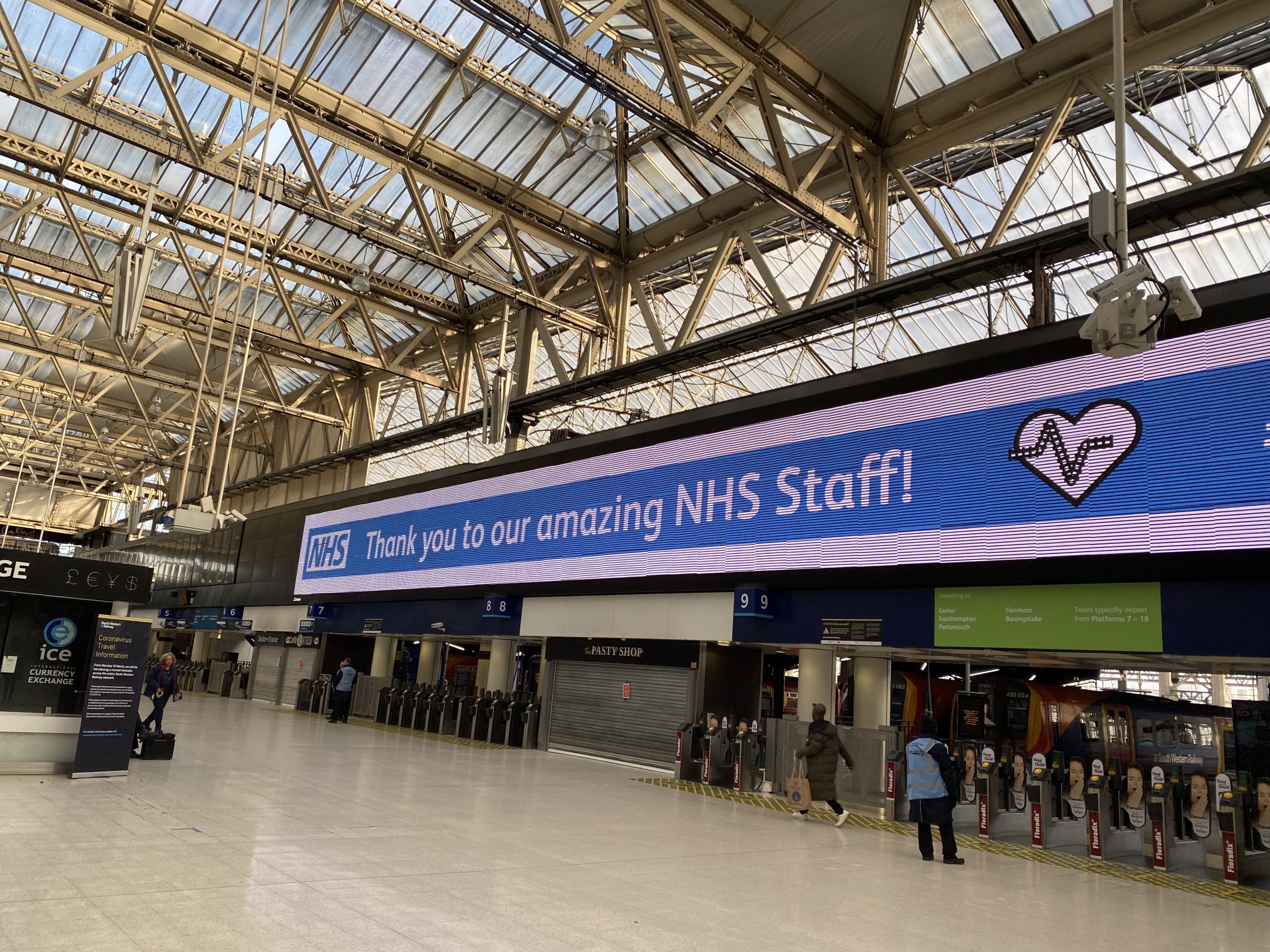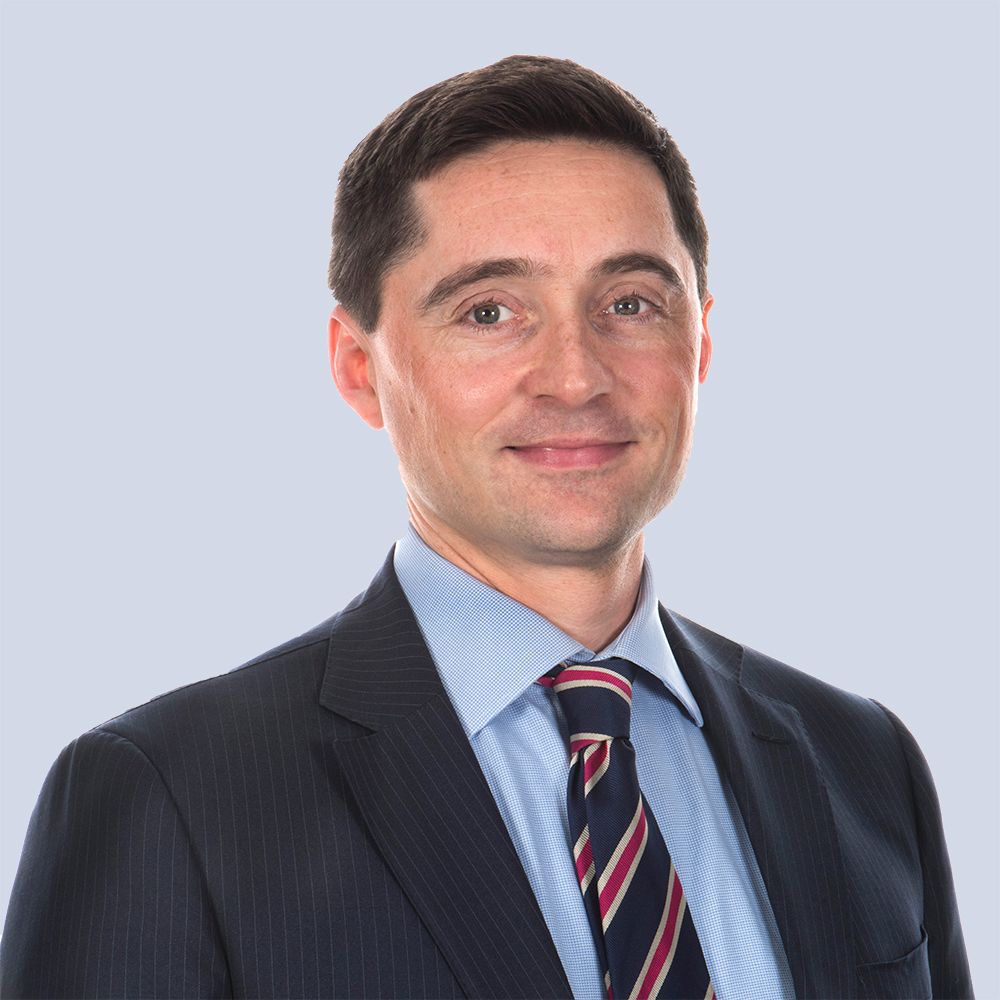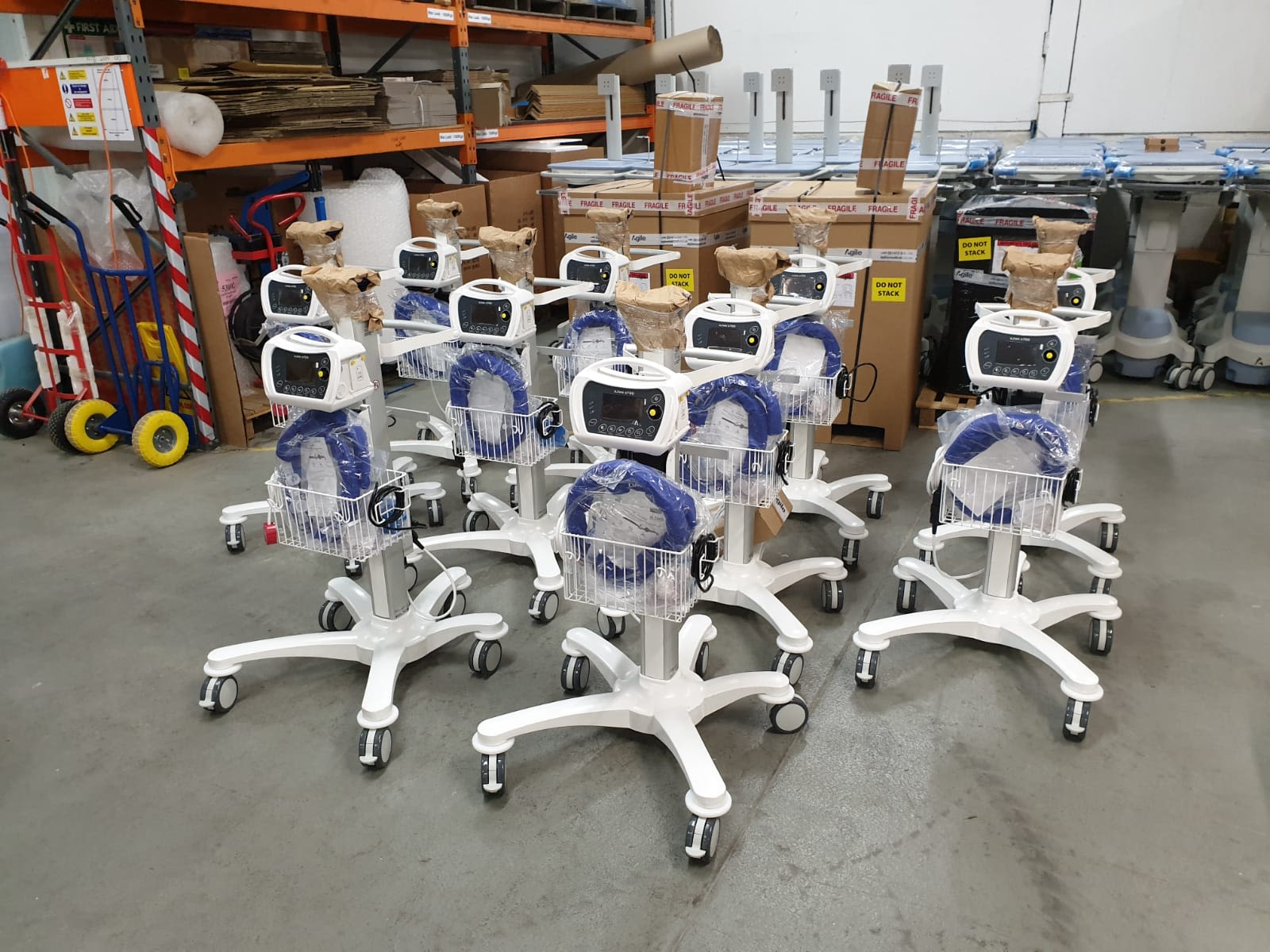Lawrence's story

Lawrence Tallon
Deputy Chief Executive
“We were seeing ghastly events unfold in Italy with patients dying because there were not enough ventilators. That gave us a very singular focus.”

“The defining moment for a lot of us came in the 2nd week of March when we had a meeting in the Governors' Hall – wood panelled, with lots of 19th century portraits. I had recently joined from University Hospitals Birmingham – my first day at work was 1 March – and Governors' Hall was the sort of place they liked to poke fun at. ‘Fancy London types...’
At the meeting, the virologist, Bill Newsholme, went through the numbers. Up to that point there hadn’t been a lot of anxiety – people had seen this stuff before. Virologists had warned about the canary in the mine. MERS was the most recent threat and that turned out to be something of a damp squib. We felt this could be big, but the NHS has got so many other big things, all the time.
Bill showed a curve diagram with a very steep rise [in cases]. The line he used was one everyone will remember. He said, statistically speaking, it means someone in this room is not going to make it. By this time the expert community was saying this is big.
Government planning had been based on flu, not coronavirus. In mid-March there was a change in policy. The government said we were to wind down surgery by 15 April. We wound it down earlier than that.
We faced two massive issues. First, keeping staff safe. Because it was designated a High Consequence Infectious Disease (HCID) and staff were using hazmat suits, COVID-19 seemed more lethal in people’s minds. PPE became a totemic issue. It wasn’t just their own safety that staff were worried but also that of their families.
We never ran out of PPE though we came very close and that created anxiety.
Second was the Italy scenario. We were seeing ghastly events unfold in a first world country with patients dying because there were not enough ventilators, and doctors were having to choose who lived and who died. That gave us a very singular focus on opening up critical care beds, getting enough ventilators and PPE and keeping staff safe.
“There was definitely a fear factor of what might come. But it also galvanised the most amazing energy, innovation, commitment and drive.”
Looking at the graphs [of potential demand], they were terrifying. It was like a tidal wave. There was definitely a fear factor of what might come. But it also galvanised the most amazing energy, innovation, commitment and drive. All the bureaucracy that slows the NHS was just cast aside.
My particular focus, with procurement colleagues, was getting more ventilators, sourcing them from around the world. The national system felt too slow, too bureaucratic.
The only place producing at scale was China. But it was a seller’s market and we kept getting gazumped. The US apparently had people there with suitcases of dollars. It was like the Wild West. I was messaging the director of intensive care at crazy hours saying, ‘Does this model look right?’ The idea of developing a business case went out the window. It was the most extraordinary, galvanising event. It was unbelievable. I didn’t take my earphones out – I practically went to bed with them.
Personally, I am proudest of the fact that under these extreme circumstances we were able to get enough ventilators for our own patients – and to provide a lot into the NHS system. We got 1,000 for London because we had the relationships with the Foreign Office to do it.

Ventilators were shipped to the UK from China
Ventilators were shipped to the UK from China
Undoubtedly there were risks. Trading in China at that time, you had to pay up front and do the best due diligence you could in the time available. You often had to take an immediate decision.
As I walked home at night, I asked myself what is the greater risk, the financial risk of these purchases, or the clinical risk of our teams not having the right equipment and patients dying as a result? Ultimately, when in this kind of scenario, you have to prioritise the safety of the patients.
We had a couple of deals on which we were gazumped. We didn’t lose anything and the money was returned. But we were paying well above normal market rates. The business practices at the time were unscrupulous.
I am most proud of the fact that, through the huge efforts of everyone across our hospitals and community services, we kept patients safe and staff safe. At one point it looked like we might struggle to do that. By hook or by crook we got the equipment we needed. There was never a time that patients didn’t have what they needed. Our results show 7 in 10 people who needed critical care survived, which compares well with the national figures. Our clinical teams did the best possible job, for which we will always be incredibly grateful.
The awfulness of the pandemic – there was nothing we could do about that. But the way our people responded – there was something we could do about that. It was like nothing I have ever seen or experienced.
Our people absolutely ran on adrenaline for at least 6 weeks. They dropped everything and it was all hands to the pump. We had the first plane out of China, lent by Richard Branson of Virgin, packed with PPE and other kit.
On Thursday evenings we looked out of the window at Westminster Bridge [the clap for carers].
Watching from a far tonight #ClapForTheNHS
— Georgina Charlton (@Speak2Georgina) April 23, 2020
As the red sun sets over London, Thank you to all my amazing colleagues @GSTTnhs. Can’t help but get a little emotional every Thursday when this happens #spreadingkindnessnotcovid pic.twitter.com/J5zAKey5eF
On Thursday evenings there were sirens, blue lights and clapping for the NHS
It was the most fantastic morale boost for people at the Trust and across the NHS. Our clinicians are saving lives all the time, they are always a hero, but if you are a manager no one thanks you. I’m ok with that. But when I looked out at the bridge, lit up, with sirens going and throngs of people – it was fantastic.”
Read more stories

